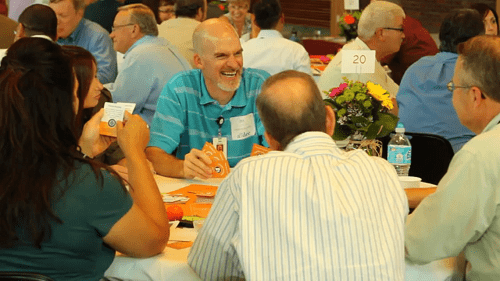
Why Games? Why are games great for learning?
“Why games? Why are games a good way to teach something?” I asked to kickoff the breakout session after my keynote at the International Game Developer’s Association (IGDA) Leadership Summit. I was honestly blown away at the amazing answers:
“All games teach.”
“Because play is how we naturally learn, it’s how we’ve always learned throughout human history, so it’s the best way to learn.”
“Games lighten the mood, making us more receptive to learning.”
“They are a disarming way to get people to talk.”
“Games provide a safe place to experiment or play with something that might be hard to experiment with in real life.”
“Games are engaging.”
“Games are fun.”
“Games connect people to each other; you can build teams while you play.”
Wow. I had planned on starting the session about my card game Choose Happiness at Work with my own why. But as I stood in front of a crowd of game developers, I realized they would probably have their own answers to “Why games? Why are games a good way to teach?” I loved the various answers above; they are exactly why I chose to teach the science of happiness through a game.
As Dr. Sivasailam “Thiagi” Thiagarajan points out in his blog, we have very different associations with work and play. He writes “Play is one of the most powerful (and least used) strategies for improving human performance.” Hear, hear!
After reading Thiagi’s blog and getting the above great comments at the IGDA summit, I am more excited than ever to wrap up Choose Happiness at Work and share it with the world. If you would like to know when the game is available, please sign up to receive game update emails (this is separate from our main email newsletter list, which sends monthy updates on the science of happiness at work).
What can you make more playful, in order to learn more? How can you gamify the next thing you want your team to learn?